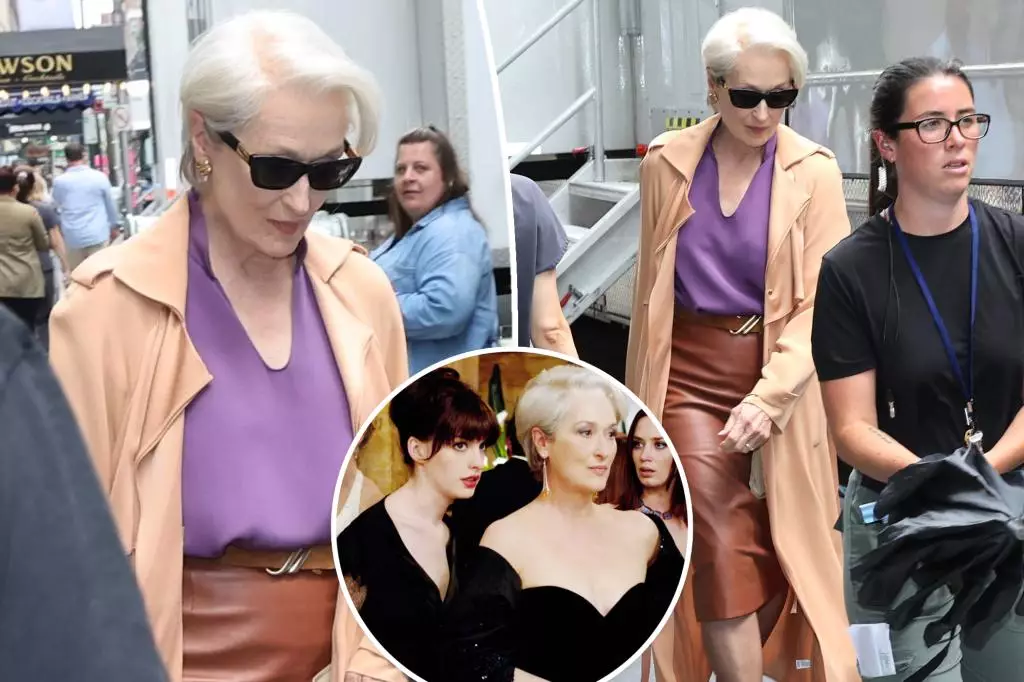The resurgence of “The Devil Wears Prada” universe signals more than just a sequel; it embodies a powerful narrative about resilience in a rapidly changing industry. The original film, with its sharp wit and compelling characters, captivated audiences and established a cultural lexicon centered around ambition, elegance, and authoritative female figures. Now, as the sequel gears up for release, anticipation is fueled not only by nostalgia but also by a desire for stories that reflect the modern landscape of media, leadership, and female empowerment.
This new installment promises to dive deep into the complexities of navigating a waning traditional media world, highlighting the evolving roles of women like Miranda Priestly and Emily. The return to this universe signals a shift from mere entertainment to a statement about resilience, adaptability, and the enduring importance of strong female figures in high-stakes environments. The narrative will challenge viewers to rethink notions of power—casting it as dynamic, nuanced, and occasionally vulnerable—mirroring the real-world struggles and triumphs of women in leadership.
Streep’s Reinforcement: The Power of Iconic Characters and the Weight of Legacy
Meryl Streep’s portrayal of Miranda Priestly transcended mere acting; it became an emblem of unwavering authority cloaked in sophistication. Her recent on-set appearance, sporting that signature icy white pixie cut, confirms her commitment to preserving the essence of that formidable persona. The visual cues—the long tan trench, purple blouse, leather skirt, and chic accessories—firmly anchor her as the epitome of timeless elegance and commanding presence.
Yet, beneath the polished exterior lies a layered character grappling with the changing tides of her industry. The sequel hints at Priestly’s navigation through industry decline, perhaps exposing her vulnerabilities and ambitions beyond the runway. Streep’s reflection on her previous experience underscores a rare honesty—acknowledging the cost of embodiment. It’s a reminder that portraying such a commanding figure demands a toll, and this new chapter might reveal a more humanized version of Priestly, balancing her formidable exterior with internal struggles, making her even more compelling.
The Cultural Relevance: Why the Sequel Matters More Than Ever
The original film’s cultural footprint was vast, shaping perceptions of fashion, feminism, and corporate power. Today, more than a decade later, the sequel arrives at a critical juncture, as industries grapple with digital transformation, diversity, and authentic leadership. The casting of influential new characters—Kenneth Branagh as Priestly’s husband, Lucy Liu, and Justin Theroux—injects fresh perspectives, emphasizing that leadership and influence extend beyond gender and traditional boundaries.
Furthermore, the storyline involving Emily’s ascension as a high-powered executive adds a layer of commentary on career progression and female solidarity. It reflects a landscape where women are breaking glass ceilings, often vying for the same influential spaces, yet also needing allies and understanding along the way. The film’s potential to explore these themes resonates with audiences eager for stories that celebrate empowerment, adaptability, and resilience.
A Personal Reflection: The Complexity of Playing Power
Meryl Streep’s candid admission that embodying Priestly was a challenging experience reveals a deeper truth about portraying authority. Her discomfort highlights the immense pressure women in powerful roles often face—both on and off-screen. The desire to depict strength authentically without romanticizing it is a delicate balancing act. This insight elevates our understanding of leadership as multifaceted, not just a position of control but a continuous negotiation of vulnerability and strength.
As the world looks increasingly at female leaders and their ability to navigate complex terrains, Streep’s portrayal becomes more relevant. Her performance embodied that tension—hard, brilliant, and sometimes emotionally taxing. It’s a testament to the importance of nuanced storytelling that acknowledges the human side of power, offering viewers a more authentic reflection of what it means to lead.
In capturing the return of Miranda Priestly and her universe, “The Devil Wears Prada 2” is poised to do more than entertain—it has the potential to inspire, challenge, and redefine how we perceive leadership in the modern era. As industry landscapes shift and women continue to carve out their spaces of influence, this story promises to serve as a mirror and a blueprint for resilience. It celebrates strength layered with vulnerability and reminds us that true power lies not in perfection, but in perseverance and authenticity. This film could become a modern classic—not just for fashion aficionados, but for anyone eager to see female ambition and determination take center stage.

